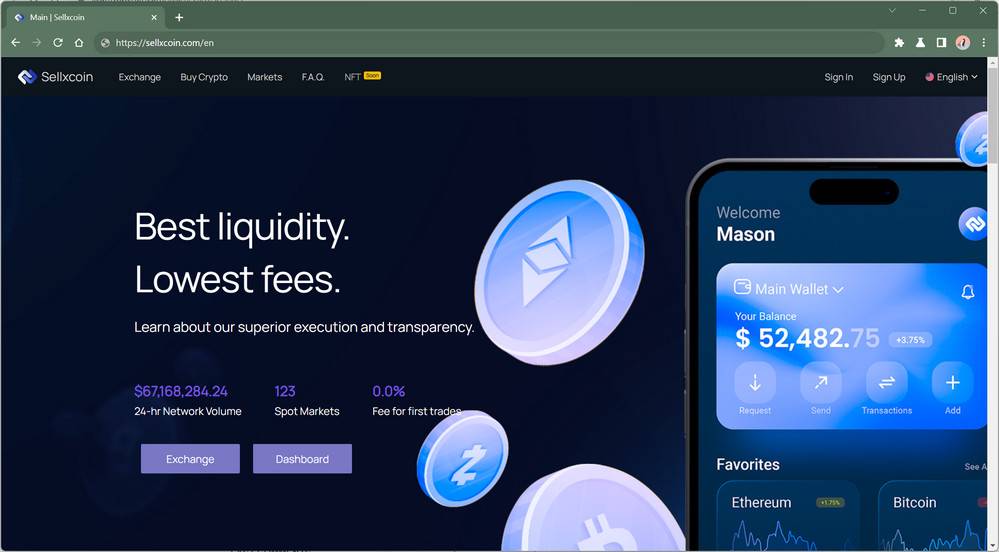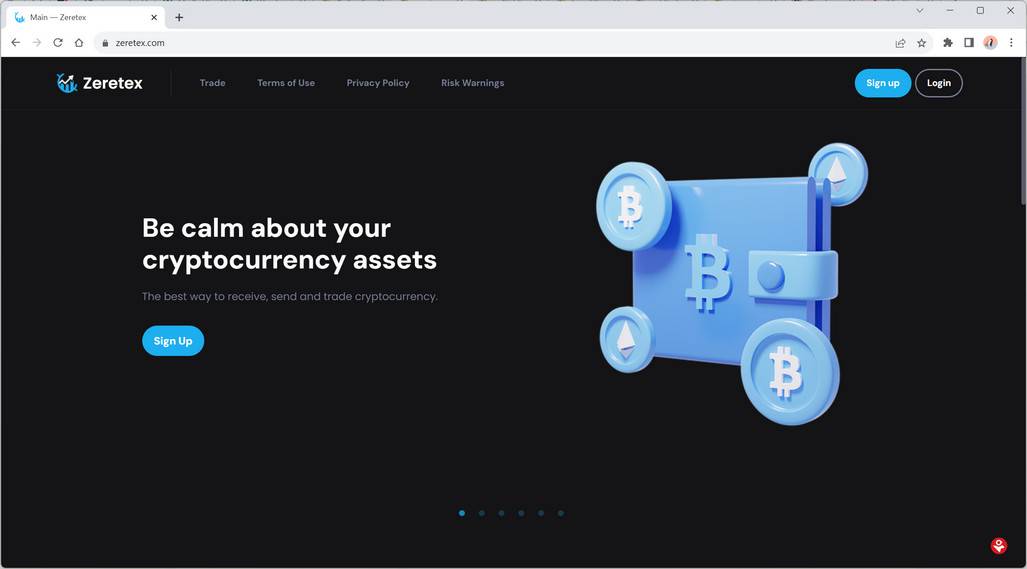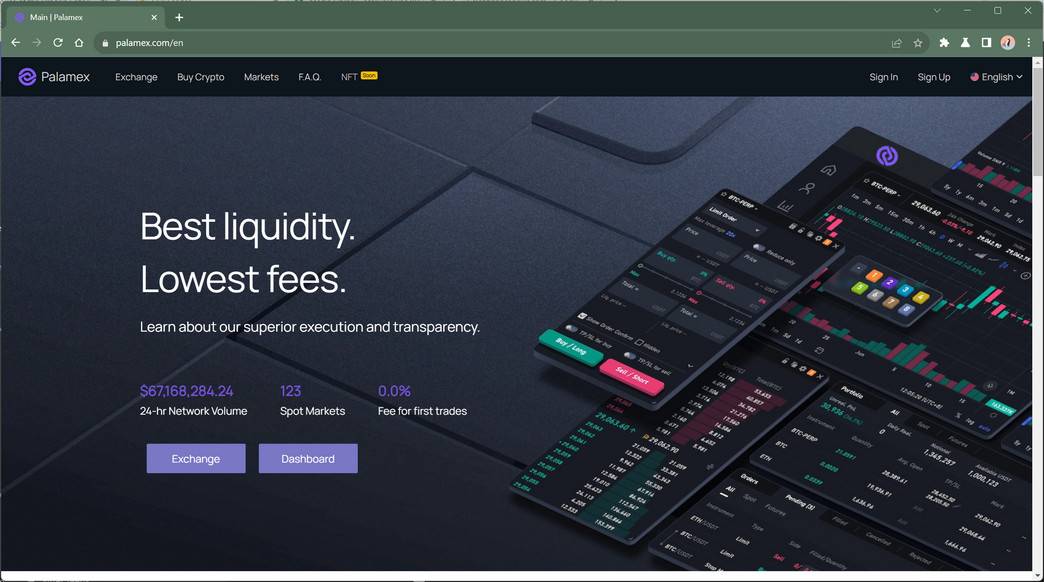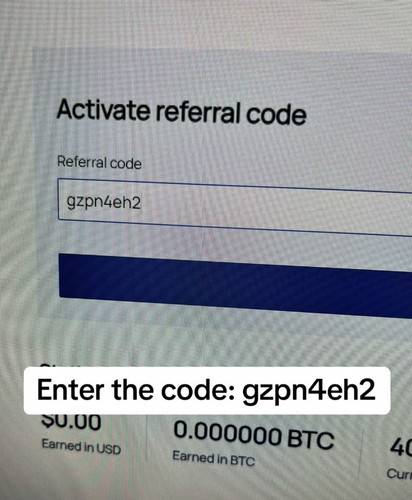Sellxcoin.com is a cryptocurrency scam website promoting free crypto giveaways and high investment returns across social media. However, this unregulated offshore platform is intent on stealing funds and personal data from victims lured in by false promises. Sellxcoin exhibits multiple red flags like no company details, anonymous owners, fake reviews, and high-pressure tactics. Those who deposit money or provide private information are unlikely to ever recover their funds or secure their identities again.
This comprehensive article will provide an in-depth look at how the Sellxcoin crypto scam operates, how to identify it, and most importantly, how to avoid falling victim.

This Article Contains:
Sellxcoin Scam Overview
Sellxcoin markets itself as a cryptocurrency exchange and trading platform, offering lucrative rewards and giveaways to new users. However, behind the facade lies an elaborate hoax aimed at stealing funds from unsuspecting victims.
Our research indicates this site is likely part of a broader interconnected scam network based in China that manages fake crypto websites to defraud customers. The Terms of Service, Privacy Policy, About Us and other legal pages appear copied from known scam sites. No customer service contact info is provided. The website lacks transparency about who owns or operates it.
Here are the key details about this scam:
- No Verifiable Company Details: Sellxcoin does not provide any documentation about its ownership, location or registration. No legitimate contact details are given either.
- Fake Elon Musk Sponsorship: The main lure is a fake “giveaway” supposedly sponsored by Elon Musk. Victims are promised 0.42 BTC for free.
- Referral Pyramid Scheme: The scam relies on a pyramid referral system to spread reach through social media.
- No Withdrawals Allowed: Funds deposited cannot be withdrawn, essentially trapping victims’ money on the platform.
This scam utilizes social engineering tactics and exploits human psychology to successfully steal funds from innocent people looking to invest in cryptocurrencies.
How the Sellxcoin Scam Works
Sellxcoin is yet another website that is part of a large network of interconnected crypto scam sites. The operators use different brand names and websites, like Sellxcoin, to deceive victims. However, these scam platforms share the same website design, terms of service, and “About Us” text, revealing they are all part of the same criminal network promoting the same type of scam under different guises. The scammers simply recreate the same scam website under different names to trick users into thinking they are signing up for a new platform and opportunity. But in reality, it is the same network of fraudsters behind the false promises and attempts to steal deposits.
The operators use clever psychological tricks and appealing offers to carry out their unethical schemes. Here is an inside look at their step-by-step process:
Step 1 – Spreading Reach Through Social Media
The scammers create fake accounts on social media platforms like Facebook, Instagram, Twitter, TikTok etc. and circulate Referral codes. They also use bots to automate this process.
This allows them to cast a wide net and reach their target audience – cryptocurrency enthusiasts looking for opportunities to earn. Here is how a TikTok post looks:
Users are incentivized to sign up with the promise of receiving crypto rewards worth thousands of dollars for free.
Suggestions of sponsorship by Elon Musk are used to make the offer more enticing, even though these claims are completely false.
Step 2 – Driving Traffic to the Sellxcoin Site
Interested users are directed to the Sellxcoin website through links shared alongside the referral codes.
The site uses appealing visuals, a professional design and claims of being a licensed company to appear credible at first glance.
Step 3 – Requesting Personal Information
To claim their rewards, users need to create an account on Sellxcoin and are prompted to provide sensitive personal information during sign up.
This includes links to their cryptocurrency wallets, email addresses, phone numbers, ID documents and more.
Step 4 – Depositing Funds
After signing up, users can see thousands of dollars worth of crypto in their Sellxcoin wallet. But there is a catch – they cannot withdraw these funds until they deposit a minimum amount themselves first.
Typically, a deposit of $100 is required to withdraw the sign up bonus. This is the trap that ultimately leads to loss of funds.
Step 5 – Disappearing Act
As soon as the deposit is made, the scammers stop communicating. They block users, delete accounts, and make off with deposited funds as well as crucial personal data.
The fake rewards are never actually credited, since they do not exist. They are merely a phishing tactic.
This is how the operators are able to defraud victims and steal hard-earned money through their deceitful online crypto scam.
Who is Being Targeted?
The Sellxcoin scam specifically targets:
- Cryptocurrency Owners: Since the premise involves giveaways and crypto rewards, the offer directly appeals to crypto owners looking to grow their assets.
- Social Media Users: Most of the promotional content is circulated on social media sites like Instagram and TikTok with the aim of luring less informed users.
- Aspiring Investors: By posing as an investment platform, the scam tries to attract audiences interested in crypto trading and investing.
- Young Adults: False promises of “free money” are used to tempt naive users with little investment experience.
- Referral Seekers: The multi-level referral structure incentivizes users to circulate links and attract more potential victims.
Ideal victims are everyday social media users with limited cryptocurrency and investment experience. They are especially vulnerable to schemes promising easy profits.
Warning Signs – How to Spot the Sellxcoin Scam
While the site seems legitimate at first glance, several red flags reveal it is an outright scam. Here are the top signs to watch out for:
- No Contact Information – No company address, email, phone number or documentation is provided.
- Too Good to Be True – The promised rewards seem unrealistically high, hinting at a fraudulent scheme.
- Grammatical Errors – The site contains spelling mistakes and badly worded claims, unlike professional platforms.
- Account Blocking – Existing users are unable to access their accounts or funds.
- No Regulatory Details – No license, registration or regulation information is given.
- Aggressive Upselling – High-pressure tactics are used to get users to deposit funds.
- Fake Celebrity Endorsements – False claims of sponsorship by celebrities like Elon Musk.
- No Withdrawal Option – Funds can only be deposited, not withdrawn.
- Phishing Attempts – Collection of personal data under the guise of “verification”.
These obvious warning signs indicate that Sellxcoin is unequivocally a scam aimed at stealing cryptocurrency.
What to Do if You are a Victim
If you have fallen prey to the Sellxcoin scam, remain calm and take these steps to limit damages:
- Stop Engaging: Immediately cease all engagement with the scammers. Do not respond to any communication.
- Notify Your Bank: Contact your bank or payments provider regarding the fraud if you can get the transactions reversed.
- Take Security Measures: Change account passwords, enable 2FA, and get a new wallet address if needed.
- Report the Scam: File reports with the FTC, CFTC, cybercrime divisions, social media sites etc.
- Collect Evidence: Gather screenshots, receipts and records of your interactions as evidence.
- Educate Yourself: Learn how to identify red flags so you can avoid scams in the future.
- Warn Others: Share your experience to make more people aware of this scam.
- Seek Emotional Support: Talk to trusted friends or professionals to cope with shock, anger and shame.
The quicker you take countermeasures, the less severe the damage will be. You can recover and bounce back from this experience.
Avoiding Crypto Scams – Tips and Best Practices
Learning how to steer clear of predatory crypto scams is crucial for staying secure. Here are some tips:
- Research Before Investing – Check exchange licenses, registrations, user reviews and complaints before sending any money.
- Beware of “Celebrity” Endorsements – Scams routinely fake endorsements without permission. Verify all such claims directly.
- Watch Out For Referral Schemes – Multi-level marketing tactics are a red flag pointing to pyramid schemes.
- Never Share Wallet Information – Giving away your private keys, recovery phrases or passwords can wipe out your holdings.
- Don’t Trust Unsolicited Offers – Offers that come out of the blue from unknown senders are likely scams.
- Use Strong Passwords – Unique passwords with alphanumeric and special characters are harder to crack. Enable two-factor authentication as well.
- Monitor Account Activity – Regularly check your account logs and transaction history to spot unauthorized activity.
- Avoid Public Wi-Fi – Public networks can expose your traffic and data. Use a VPN if you need to access crypto accounts.
Staying vigilant is key – if an offer seems too good to be true, it probably is. Stick to reputable platforms, and never share private account details with anyone.
FAQs
What is the Sellxcoin scam?
Sellxcoin is a fake cryptocurrency exchange that promises lucrative sign up rewards but steals deposited funds instead. It lures victims through social media ads and fake celebrity endorsements.
How does the Sellxcoin scam operate?
It uses referral links to reach users and direct them to their website. Users are asked to share personal details and deposit funds before withdrawing promised bonuses that do not actually exist.
What are some warning signs of the Sellxcoin scam?
Red flags include no contact info, too good to be true offers, grammatical errors, fake celebrity associations, aggressive upselling tactics, and inability to withdraw funds from the platform.
What should I do if I am a victim of the Sellxcoin scam?
You should immediately stop engaging with the scammers, notify relevant authorities, take security precautions, collect evidence, educate yourself on scams to avoid repeating mistakes, and seek emotional support.
How can crypto scams like Sellxcoin be avoided in the future?
Conduct thorough research, avoid referral schemes and unsolicited offers, never share wallet details, use strong passwords and two-factor authentication, monitor account activity, and avoid public Wi-Fi.
The Bottom Line
The Sellxcoin scam is an elaborate hoax designed to mislead cryptocurrency enthusiasts with the false promise of free giveaways. In reality, it is a well-disguised phishing scheme aimed at stealing funds and personal information.
Always exercise caution when exploring new crypto platforms, especially if they seem too good to be true. Conduct due diligence, watch for red flags, and never provide sensitive data to unknown entities. With vigilance and security smarts, these scams can be avoided.
















